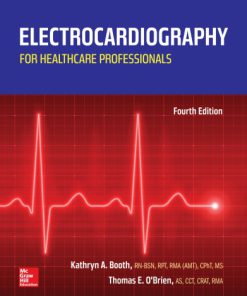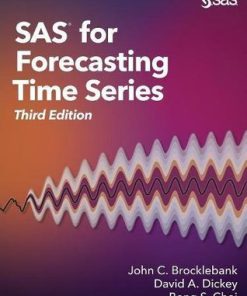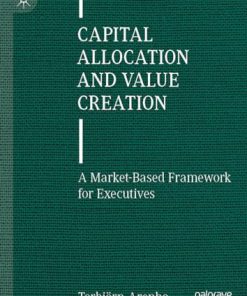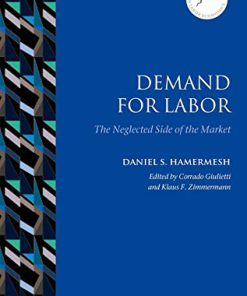Demand Forecasting for Executives and Professionals 1st Edition by Stephan Kolassa, Bahman Rostami-Tabar, Enno Siemsen ISBN 9781032507729 1032507721
$50.00 Original price was: $50.00.$25.00Current price is: $25.00.
Demand Forecasting for Executives and Professionals 1st Edition by Stephan Kolassa, Bahman Rostami-Tabar, Enno Siemsen – Ebook PDF Instant Download/Delivery: 9781032507729, 1032507721
Full download Demand Forecasting for Executives and Professionals 1st Edition after payment
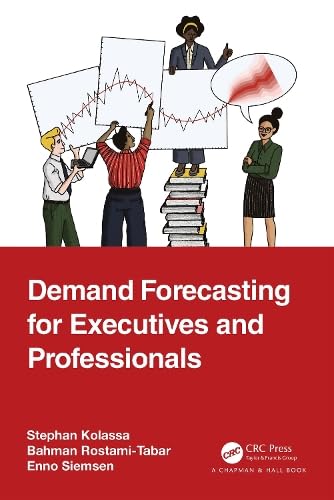
Product details:
ISBN 10: 1032507721
ISBN 13: 9781032507729
Author: Stephan Kolassa, Bahman Rostami-Tabar, Enno Siemsen
This book surveys what executives who make decisions based on forecasts and professionals responsible for forecasts should know about forecasting. It discusses how individuals and firms should think about forecasting and guidelines for good practices. It introduces readers to the subject of time series, presents basic and advanced forecasting models, from exponential smoothing across ARIMA to modern Machine Learning methods, and examines human judgment’s role in interpreting numbers and identifying forecasting errors and how it should be integrated into organizations.
This is a great book to start learning about forecasting if you are new to the area or have some preliminary exposure to forecasting. Whether you are a practitioner, either in a role managing a forecasting team or at operationally involved in demand planning, a software designer, a student or an academic teaching business analytics, operational research, or operations management courses, the book can inspire you to rethink demand forecasting.
No prior knowledge of higher mathematics, statistics, operations research, or forecasting is assumed in this book. It is designed to serve as a first introduction to the non-expert who needs to be familiar with the broad outlines of forecasting without specializing in it. This may include a manager overseeing a forecasting group, or a student enrolled in an MBA program, an executive education course, or programs not specialising in analytics. Worked examples accompany the key formulae to show how they can be implemented.
Table of contents:
1 Introduction
1.1 The value of a good forecasting process
1.2 Software
Key takeaways
2 The forecasting workflow
2.1 Identify a decision requiring a forecast
2.2 Determine requirements
2.3 Gather data and information
2.4 Prepare data.
2.5 Visualize data
2.6 Choose and train models
2.7 Produce forecast.
2.8 Evaluate quality.
2.9 Communicate forecast
2.10 Possibly adjust forecast
Key takeaways
3 Choice under uncertainty
3.1 Forecasting methods
3.2 Forecasts and service levels
Key takeaways
4 A simple example
4.1 A point forecast
4.2 Prediction intervals.
4.3 Predictive distributions
4.4 Decision-making.
Key takeaways
Forecasting basics
5 Know your time series
5.1 Data availability.
5.2 How much data is necessary?
5.3 Data quality
5.4 Stationarity
5.5 Forecastability and scale
5.6 Using summary statistics to understand your data
Key takeaways
6 Time series components
6.1 Level
6.2 Trend
6.3 Seasonality
6.4 Cyclical patterns.
6.5 Other characteristics of time series
6.6 Visualizing time series features.
Key takeaways
7 Time series decomposition
7.1 The purpose of decomposition
7.2 Decomposition methods
7.3 Stability of components
Key takeaways
Forecasting models
8 Low-hanging fruit: simple forecasts
8.1 The historical mean
8.2 The naive forecast
8.3 The seasonal naive forecast
8.4 Other simple methods
8.5 Non-expectation forecasts
8.6 Ensemble forecasting
8.7 When are our forecasts too simple?
Key takeaways
9 Exponential smoothing
9.1 Change and noise
9.2 Optimal smoothing parameters
9.3 Extensions
Key takeaways
10 ARIMA models
10.1 Autoregression
10.2 Integration.
10.3 Moving averages
10.4 Autocorrelation and partial autocorrelation
10.5 Information criteria
10.6 Discussion
Key takeaways
11 Causal models and predictors
11.1 Association and correlation
11.2 Predictors in forecasting
11.3 Leading and lagging predictors
11.4 An example: advertising and sales
11.5 Correlation, causation and forecasting
11.6 Combination with time series
11.7 Model complexity and overfitting
Key takeaways
12 Count data and intermittent demand
12.1 Definitions
12.2 Traditional forecasting methods.
12.3 Croston’s method
Key takeaways
13 Forecasting hierarchies
13.1 Structural hierarchies
13.2 Forecasting hierarchical time series
13.3 Temporal hierarchies and aggregation
13.4 When do we not want coherent forecasts?
Key takeaway
14 Artificial intelligence and machine learning
14.1 Neural networks and deep learning
14.2 Tree-based methods and random forests
14.3 Boosting and variants
14.4 Point, interval and density AI/ML. forecasts
14.5 Al and ML versus conventional approaches
Key takeaways
15 Long, multiple and non-periodic seasonal cycles
15.1 Introduction..
15.2 Long seasonality.
15.3 Multiple seasonalities
15.4 An example: ambulance demand
15.5 Modeling complicated seasonality
15.6 Forecasting models for complicated seasonality
Key takeaways
16 Human judgment
16.1 Cognitive biases
16.2 Domain-specific knowledge
16.3 Political and incentive aspects
16.4 Correction and combination.
16.5 Forecasting in groups
Key takeaways
Forecasting quality
17 Error measures
17.1 Bias and accuracy
17.2 Percentage, scaled and relative errors
17.3 Assessing prediction intervals and predictive distributions
17.4 Accuгаcy measures for count data forecasts.
17.5 Forecast accuracy and business value
Key takeaways
18 Forecasting competitions
18.1 Planning
18.2 Data
18.3 Procedure
18.4 Additional aspects.
Key takeaways
Forecasting organization
19 Leading forecasters and forecasting teams
19.1 The ideal forecaster.
19.2 How do forecasters tick?
19.3 Making your forecaster happy.
19.4 What can you expect from your forecaster?
Key takeaways
20 Sales and operations planning
20.1 Forecasting organization
20.2 Organizational barriers
Key takeaways
21 Why does forecasting fail?
21.1 There is no alternative to forecasting
21.2 What we can forecast
21.3 We can’t achieve unlimited accuracy
21.4 Confusing forecasts, targets, decisions and plans
21.5 No systematic tracking of forecast quality
21.6 Inappropriate error measures
21.7 Data availability and quality
21.8 Too much judgmental intervention
21.9 Follow-on processes do not leverage forecasts
21.10 Feedback to the process being forecasted
Key takeaways
Learning more
22 Resources
22.1 Non-technical material
22.2 Somewhat technical material.
22.3 Technical material
22.4 Non-profit organizations
22.5 Events.
22.6 Datasets
22.7 Online resources
Key takeaways
People also search for:
demand forecasting for executives and professionals pdf
forecasting job description
budget and forecasting job description
sales forecast vs demand planning
what are future demand jobs
Tags: Stephan Kolassa, Bahman Rostami Tabar, Enno Siemsen, Demand Forecasting, Executives, Professionals
You may also like…
Business & Economics - Management & Leadership
Science (General)
An introduction to nonparametric statistics First Edition Kolassa
Business & Economics - Investing
Capital Allocation and Value Creation A Market Based Framework for Executives 1st Edition Arenbo
Business & Economics - Human Resources
Demand for labor : the neglected side of the market 1st Edition Hamermesh
Business & Economics - Industries
Forecasting for the Pharmaceutical Industry 1st Edition Cook
Business & Economics





